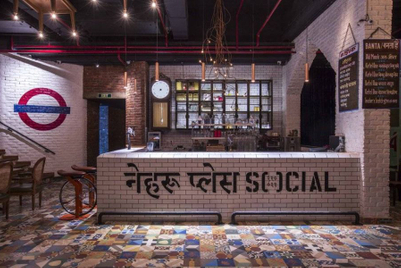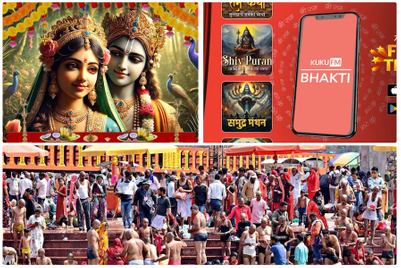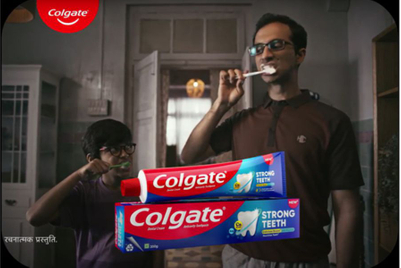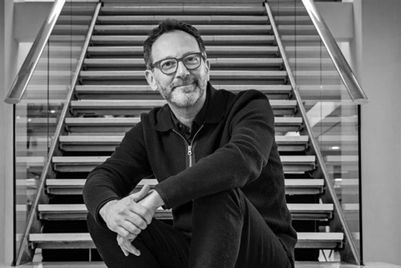
On March 5, 2025, Mumbai-based marketing professional Ashish Kaul eagerly anticipated an extraordinary evening. His destination? Lyla, a renowned bar in the city, where Shinya Koba from Asia’s celebrated Yakoboku was set to take over for one night. Known for his precision and bold Japanese flavours, Koba brought a taste of Kumamoto to Mumbai, crafting signature cocktails with rare ingredients and cutting-edge techniques.
“Events like these are a great way to unwind and learn something new,” says Kaul. “Not everyone can visit Yakoboku, so experiencing its essence here, even in a limited way, is a treat.”
Kaul isn’t alone in his enthusiasm for such exclusive, time-sensitive culinary experiences. From chef collaborations to guest mixologist showcases, these pop-ups are drawing eager patrons. Prachi Shastri, another avid attendee, recalls a similarly immersive evening when Delhi’s award-winning Sidecar took over Pune’s Cobbler & Crew.
Though not a new concept, restaurant and bar takeovers have gained significant traction in recent years. Originally driven by global influences, these collaborations now increasingly spotlight homegrown talent. Cities like Mumbai, Delhi, Goa, Bengaluru, Kolkata, and Pune—sometimes even the Northeast—are seeing a surge in cross-industry partnerships, bringing together bars, restaurants, and independent chefs for uniquely curated dining experiences.

India’s café and bar market is projected to reach $17.54 billion in 2024, growing at a 7.3% CAGR from 2017 to 2023, according to Mordor Intelligence. The sector is set to accelerate further, with an expected 8.33% CAGR from 2024 to 2029. As competition intensifies, brands are focusing on personalised dining, driven by millennials—who make up over 35% of the population—seeking unique, experience-led offerings.
Beyond the buzz
Bar takeovers can be far more than a clever marketing gimmick—when done right, they bring tangible business benefits. Vijeta Singh, partner at Cobbler & Crew, asserts, “When executed with intent, bar takeovers go far beyond marketing. They offer an opportunity to learn from top bartenders, discover new-age techniques, and gain insights into local ingredients and cultural nuances. For our team, these collaborations are invaluable for research and development, inspiring new cocktail menus and refining our craft.”
Rajit Shetty, managing director of Ramee Group of Hotel, Resorts and Apartments agrees, highlighting both revenue and long-term brand equity. He would know; he owns restaurants including Megumi, OCHO, ilili and Muttuswami Café and Megumi has organised several bar takeovers.
“Bar takeovers are more than just a marketing gimmick; they drive real revenue, increase brand visibility, and create long-term customer loyalty. The success of a takeover is measured through a lot of variables like revenue growth and brand awareness,” Shetty stated.
Meanwhile, Vikram Achanta, Founder and CEO of Tulleeho, points to the immersive experience they offer. “It is a window into experiencing different cultures and varieties within one location: imagine getting to taste the best of bars from Japan, bringing their precise flavour profiles, or bars from Thailand championing purely Asian flavours. Key success metrics include revenue uplift, social media engagement, and repeat customer visits, especially with the allure of changing menus.”
However, as the co-founder of 30BestBarsIndia and India Bartender Week, Achanta cautions that success hinges on local adaptation. According to him, menus that overlook regional preferences can struggle, whereas those that incorporate Indian ingredients and techniques see greater consumer acceptance.

“Another point to note is that the ethos of both participating bars must align in terms of space, style, aesthetics, and ambience to appeal to the right target group without diluting their individual identities,” Achanta opined.
Measuring Success
A well-executed takeover should yield a measurable impact, but success isn't defined by just one parameter. Shetty shares data from past events; according to him a well-executed takeover can result in a 20-40% increase in daily sales compared to regular nights.
“For example, during a recent collaboration at our bar, liquor sales spiked 35% above average. Limited-time experiences generate high social media engagement, with a single takeover night often delivering 3-5x more Instagram reach than a regular post. Also, 30-40% of attendees from these takeovers return within the next two months,” he stated.
Meanwhile, Singh believes success isn’t just about revenue. Her restaurant’s team assesses the quality of cocktails served, the overall guest experience, and the energy brought in by the guest bartenders. Why? Because a takeover is successful when guests engage with the experience and leave with a deeper appreciation for the craft.
A bar takeover is more than just an event—it’s a strategic marketing move that drives brand visibility, attracts new clientele, and boosts revenue. Executed well, it offers guests a chance to explore unique flavours at their go-to spots, much like chef-led pop-ups and restaurant collaborations that bring exclusive culinary experiences to new audiences.

Ankush Gamre, head mixologist at Relais & Châteaux Masque further explained, “The success of a takeover can be measured through a mix of metrics—revenue from drink sales or spots sold, social media engagement, and long-term customer loyalty. Ultimately, while short-term buzz is important, the real value comes from converting new guests into loyal guests who love your brand.”
Liquor brands: The silent financiers behind the trend?
Liquor brands undeniably play a role, but the extent of their involvement varies. Brands often support takeovers, leveraging them as a powerful tool for community-building. These partnerships drive product visibility through co-branded menus, immersive guest experiences, and strategic storytelling.
Achanta explains, “With Indian bartenders increasingly championing local ingredients on global platforms, the participation from larger brands helps shape the Indian bar scene into a more sophisticated drinking space.”
However, Singh clarifies that bars must maintain control over the experience. The key, in her opinion, is to align the right sponsors with the right shifts—creating a win-win situation where both the bar and the brand benefit. “We ensure that the collaboration enhances the guest experience rather than just pushing a product mindlessly,” she said.
Shetty echoes this sentiment. Sponsor support is crucial for covering guest bartender fees, ingredient sourcing, and promotional costs.
“But we must ensure menus and pairings align with our brand ethos, rather than just pushing a brand’s agenda. The best partnerships involve brands that respect artistry over advertising, allowing bartenders to innovate with their products rather than be limited by them,” he added.
Are we nearing saturation?
With the rising frequency of pop-ups and takeovers, is the market reaching a point of fatigue? Differentiation is key.
Instead of following trends, Shetty’s restaurants focus on curating unique experiences, like a Mayan-inspired cocktail night or a bartender battle with interactive customer engagement. They also look at cross-industry collaborations, pairing mixologists with chefs, musicians, or artists.

Singh insists that takeovers must be intentional to remain relevant. “We only collaborate when there is clear synergy between our team and the guest bartenders. The industry isn’t saturated because food and drinks will always evolve. However, it’s essential to keep innovating.”
Ankush Gamre, head mixologist at Relais & Châteaux Masque believes the focus should always remain on delivering a memorable experience. “It might seem like the market is a bit saturated, but it’s about offering the best, most memorable experience to guests. Being innovative, constantly staying on top of trends and understanding the palate you’re serving is essential.”
Bar takeovers, when executed with thought and precision, are much more than a one-night buzz. They provide an immersive experience for consumers, elevate the craft of bartending, and create a ripple effect for both bars and brands.
Whether the market is saturated will depend on whether bars choose to innovate or simply replicate. The key takeaway? A good cocktail is worth coming back for—if the experience is memorable enough.



.jpg&h=334&w=500&q=100&v=20250320&c=1)


.jpg&h=334&w=500&q=100&v=20250320&c=1)




.jpg&h=334&w=500&q=100&v=20250320&c=1)





.jpg&h=268&w=401&q=100&v=20250320&c=1)
.jpg&h=268&w=401&q=100&v=20250320&c=1)

